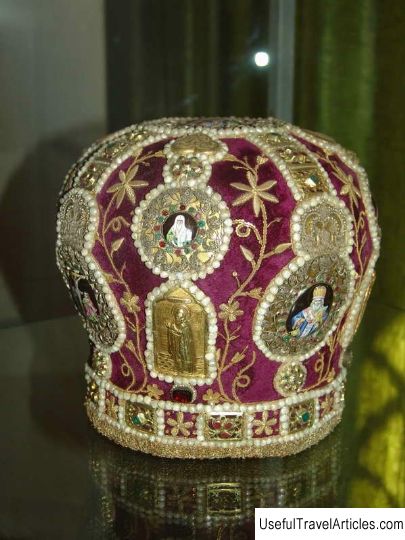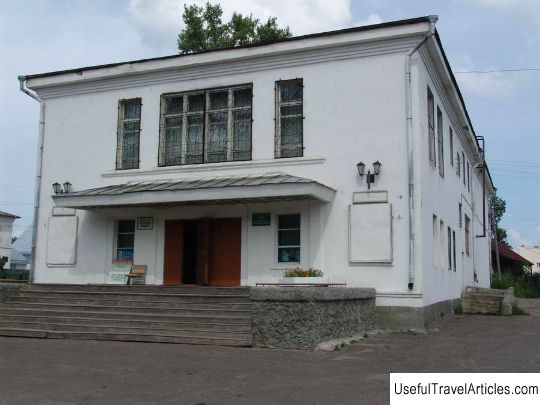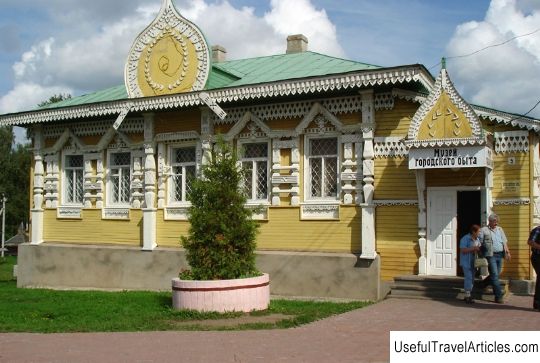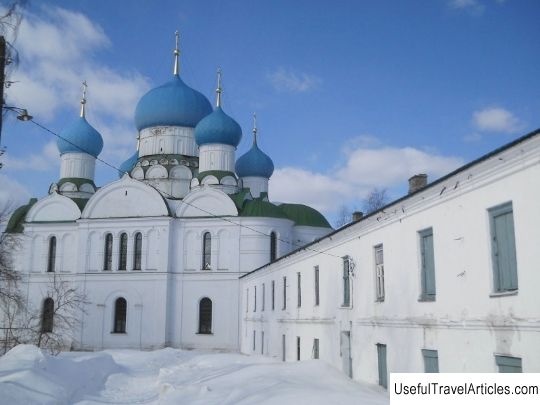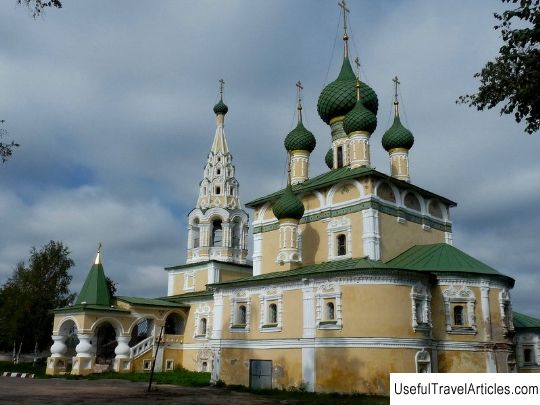Uglich Kremlin description and photo - Russia - Golden Ring: Uglich
Rating: 8,3/10 (599 votes) 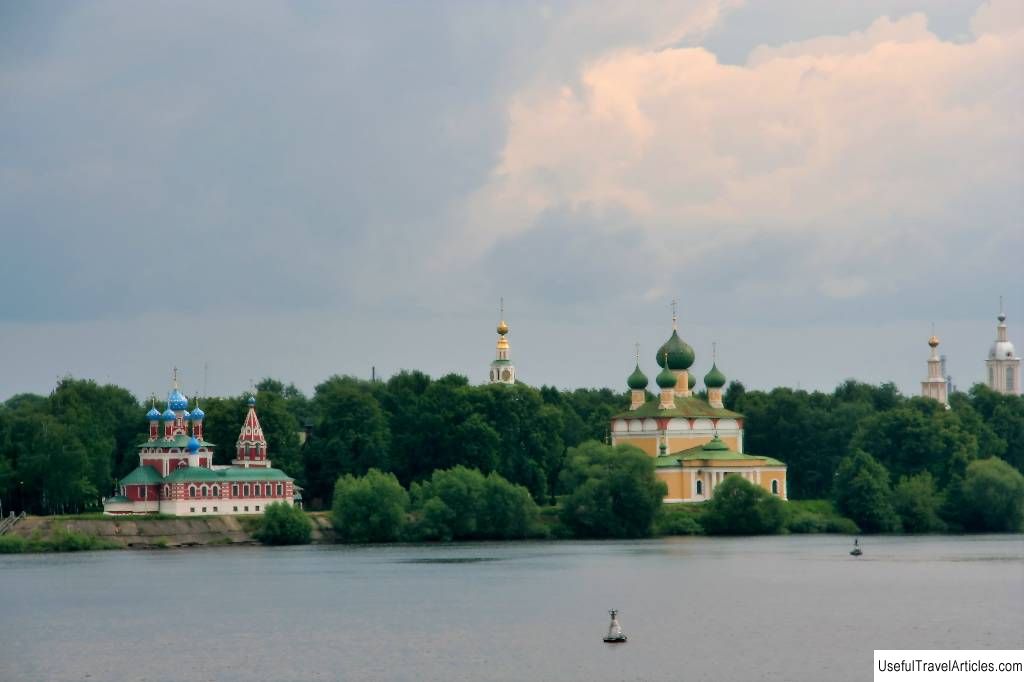
Uglich Kremlin description and photos - Russia - Golden Ring: Uglich. Detailed information about the attraction. Description, photos and a map showing the nearest significant objects. Photo and descriptionUglich is one of the most ancient and picturesque cities in Russia on the banks of the Volga, it is part of the "Golden Ring". The ensemble of his Kremlin includes a ceremonial princely palace of the 15th century, a church "on blood" built on the site of the death of Tsarevich Dimitri, two cathedrals of the 17th and 19th centuries and the building of the city council. The Transfiguration Cathedral is functioning, and the rest of the buildings house expositions of the Uglich Historical and Architectural Art Museum. Uglich FortressUglich was once surrounded by a wooden fortress on high ramparts. On three sides it was protected by water - the Volga and its tributaries - and a ditch was dug on the fourth. The Uglich fortress had the typical fate of a Russian wooden fortress - it was repeatedly burned and restored again. The settlement itself on this site had existed since the 6th-7th centuries, and by the time of the Mongol-Tatar invasion, the city had become the center of an independent small principality. It was burnt down in 1238, then rebuilt, then burnt down in 1371 during the struggle between the Moscow prince Ivana Kalita and the Tver prince Mikhail, who fought over this territory. Then Uglich nevertheless became a part of the Moscow principality and was fortified by Dmitry Donskoy, but all the fortifications remained wooden. During the Time of Troubles, the city was ravaged by the troops of Jan Sapieha, and then rebuilt. In the 17th century, it was surrounded by a double ring of fortifications: wooden walls with a wide and deep moat and an earthen wall protecting the settlement. But after the 17th century, the city no longer participated in any hostilities, and in the 18th century the dilapidated wooden Kremlin was demolished. Only the remains of ramparts and a moat have survived from it, through which a bridge leads to the territory of the Kremlin - the Uglich Kremlin is still located on a small island. Chambers of Uglich princes Now the Kremlin ensemble of Uglich includes several ancient buildings. First of all, these are the Chambers of Uglich Princes - a unique monument of civil architecture of the 15th century. They were built in 1480. Initially, the brick chambers were part of a large wooden palace complex, but only they have survived. They were built for himself by the Uglich prince Andrei Vasilievich, the younger brother of Ivan III, the prince of Moscow. The Moscow palace chambers were taken as a model. The palace was two-story on a high basement, with a red porch and many internal passages. During the excavations, numerous tiles, ceramic ornaments, and carved balusters were found - all this suggests that it was extremely richly decorated. It was here that Tsarevich Dimitri once lived before his death. A monument to the boy has recently appeared in front of the chambers. By the 18th century, the building was hopelessly dilapidated, covered with cracks and lost most of the decor. It was renovated already at the beginning of the 19th century at the expense of Uglich merchants - then the roof and porch were replaced and the rooms were re-painted. By 1892, the building was again renovated and redesigned in the pseudo-Russian style, trying to restore its original appearance. The author of the project was the architect I. Sultanov. On the occasion of the 300th anniversary of the death of Tsarevich Dimitri in Uglich, a museum was opened here. Now there are expositions of the Uglich Museum-Reserve. In one of the rooms, the alleged interior of the 15th century is reproduced, in others there are exhibits telling about Uglich and the historical events that are associated with it. The museum presents a rich collection of local lore archaeological finds, household items, weapons, tools, dishes and furniture of the 17th-19th centuries. Church of Tsarevich Dimitri The second most famous monument of Uglich is its cathedral “on blood” - the Church of Tsarevich Dimitri. It was the youngest son of Ivan the Terrible and the heir to the throne, who died here under still unclear circumstances - historians have never been able to solve this riddle. It was with this murder that the Troubles began. The prince died in 1591, and already in 1606 he was canonized. A chapel was erected at the place of his death, then a wooden church, and in 1682 a stone one was erected. It turned out to be bright and beautiful: it was originally painted in blood red and decorated with white decor. A unique painting has been preserved here - "The death of Tsarevich Dimitri". It can be considered the first example of Russian historical painting. Now it houses a museum exposition dedicated to Tsarevich Dimitri. Here are collected relics that have survived: a thimble cross, an icon-reliquary of the tsarevich and a cancer, in which his body was transferred to Moscow - and it tells about those relics that were lost after the revolution. One of the main exhibits is the famous exiled Uglich bell. This is an alarm bell from the ringing of which the turmoil began: first, unrest in Uglich, after the death of the tsarevich, and then throughout the state. The bell was punished approximately: they pulled out his tongue and sent him into exile in Siberia, to Tobolsk. The bell spent three hundred years in Tobolsk and was decorated there with the inscription "the first inanimate". The idea of returning the exiled bell to its homeland arose in the middle of the 19th century among political exiles - the Decembrists and participants in Polish uprisings. The bell was returned to Uglich in 1892, and its copy made of papier-mache remained in Tobolsk. Transfiguration Cathedral In 1706, a new Transfiguration Cathedral was built on the site of the old one, which was being built simultaneously with the prince's chambers. The architect was Grigory Fedorov. The traditional five-domed temple was built in the Naryshkin Baroque style. Inside, it is devoid of pillars - it has a single internal space. This was a great engineering novelty of the 18th century. In the 1840s, classicist porticoes with columns appeared near the temple. The three-tiered bell tower was built in the 1730s. A striking clock was installed on it. Already in Soviet times, they were replaced by electronic ones, and the old clockwork became part of the museum exposition. The paintings made by Timofei Medvedev's team at the beginning of the 19th century in the academic style have been preserved. These are no longer frescoes, but pictures of biblical subjects inscribed in frames, the temple resembles an art gallery. Some of them are copies of classical painting of the Renaissance period, for example, The "Transfiguration" on the north wall is a copy of Raphael's painting. The carved multi-tiered iconostasis was made in 1860. In 1929 the temple was closed and given to the museum. Nowadays regular services are held here - it is considered the main temple of Uglich. Epiphany Cathedral The Epiphany Cathedral was built in 1827 as a warm winter temple in the style of classicism and painted in the classical style by the same team of T. Medvedev. In Soviet times, it lost its dome and most of the decoration - now it is just a rectangular building with columns. It belongs to the museum. In the altar part there is an exposition dedicated to the Uglich saints - here are collected icons of Tsarevich Dimitri, Prince. Roman Uglichsky, Rev. Paisiy Uglichsky and others. The main collection of this museum is portraits of Uglich residents of the 18th-20th centuries. Here are exhibited paintings by a local portraitist of the first floor. XIX century Ivan Tarkhanov - he painted portraits of Uglich, Yaroslavl and Rybinsk merchants and officials, and they became a unique source for local history of these cities. There are also works by another famous native of Uglich, poet, ethnographer and artist Alexander Gusev-Muravyevsky, who since 1917 worked in various positions in the Uglich Museum. City DumaIn 1815 a new building of public places appears in the Kremlin. It houses the City Council, a bank, a court, an archive, a district school - in a word, the entire city administration. The architect of the building - L. Ruska, who worked in the style of classicism, author of a number of "model projects" of public buildings, one of which was used to build it. Among his other works are Anichkov and the Tauride Palace in St. Petersburg, Kamennoostrovskaya embankment with sphinxes and much more. Now the building houses an exposition of folk arts and crafts. These are household items, peasant festive costumes and much more that came to the museum from the houses of residents of the city and the surrounding area. In addition, temporary exhibitions from museum funds are arranged in this building, and museum events are held in the Red Living Room: concerts, lectures, presentations, etc. A small open exhibition is located on the territory of the Kremlin. These are samovars and kitchen utensils, an old millstone and even the first tractor. Not far from the Kremlin there is a gallery of contemporary Orthodox painting, where the works of Abbot Raphael (Simakov), formerly an avant-garde artist, and now an Orthodox painter, are exhibited.      We also recommend reading Agia Napa Monastery description and photos - Cyprus: Ayia Napa Topic: Uglich Kremlin description and photo - Russia - Golden Ring: Uglich. |

